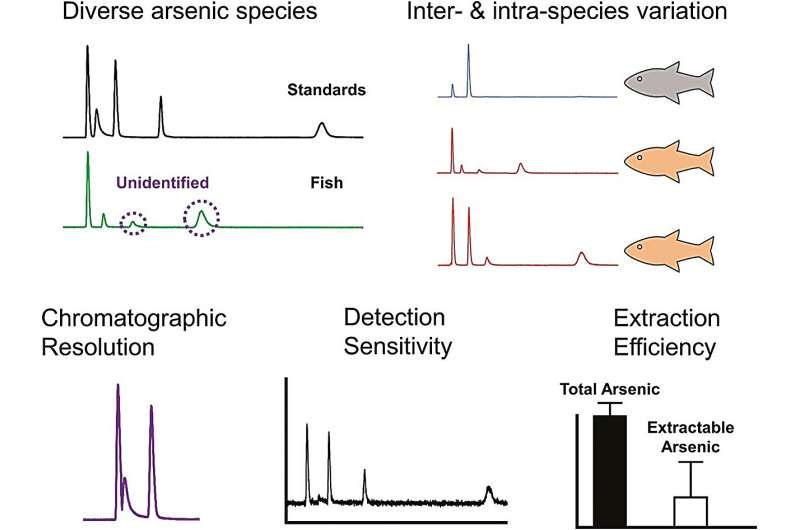This article has been reviewed according to Science X's editorial process and policies. Editors have highlighted the following attributes while ensuring the content's credibility:
fact-checked
proofread
A closer look at arsenic speciation in freshwater fish: The need for comprehensive analysis

In a review published in the journal Food Quality and Safety, researchers from University of Alberta consolidated existing knowledge on arsenic speciation in freshwater fish. Their investigation delved into techniques for arsenic determination, highlighting the challenges and avenues for further research.
A central focus of the study was the identification of arsenic species in fish, considering the effects of environmental arsenic concentrations, and exploring extraction, separation, and detection methodologies. It was observed that marine organisms often contain higher arsenic concentrations than their freshwater counterparts. Factors such as location, physiological state, and habitat influence arsenic levels in freshwater fish.
While prominent arsenic species like arsenobetaine, AsIII, AsV, monomethylarsonic acid, and dimethylarsinic acid have been identified, many remain elusive. The consistency and efficiency in arsenic extraction are paramount, yet the efficiency can vary among fish species, underlining the importance of method refinement.
High-Performance Liquid Chromatography (HPLC) is the preferred technique for arsenic separation, synergizing well with the leading detection tool, Inductively Coupled Plasma Mass Spectrometry (ICPMS). Despite progress in arsenic speciation and detection, inconsistencies between known arsenic species and detected total arsenic levels in fish remain, pinpointing unidentified species and accentuating the imperative for continued research.
Identifying the unknown arsenic species in freshwater fish is essential for a deeper understanding of potential health risks. By utilizing advanced detection techniques and conducting thorough studies, we can promote safer aquatic food consumption. Furthermore, a comprehensive grasp of arsenic speciation in these fish can pave the way for research into other food items, reinforcing our commitment to public health safety.
More information: Karen S Hoy et al, Arsenic speciation in freshwater fish: challenges and research needs, Food Quality and Safety (2023). DOI: 10.1093/fqsafe/fyad032
Provided by TranSpread




















